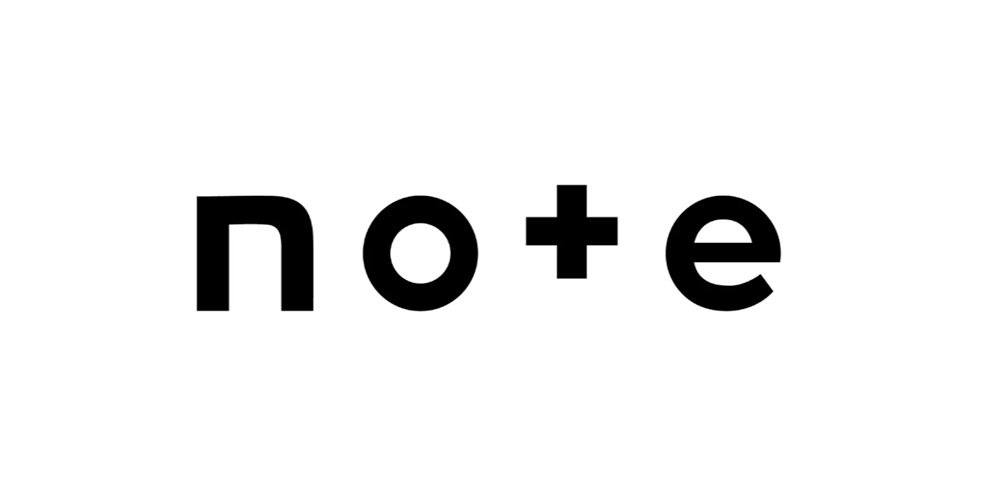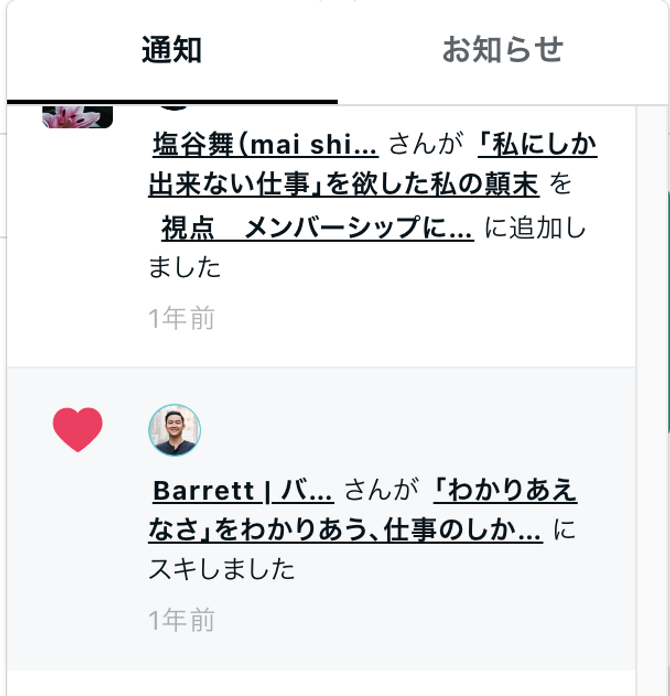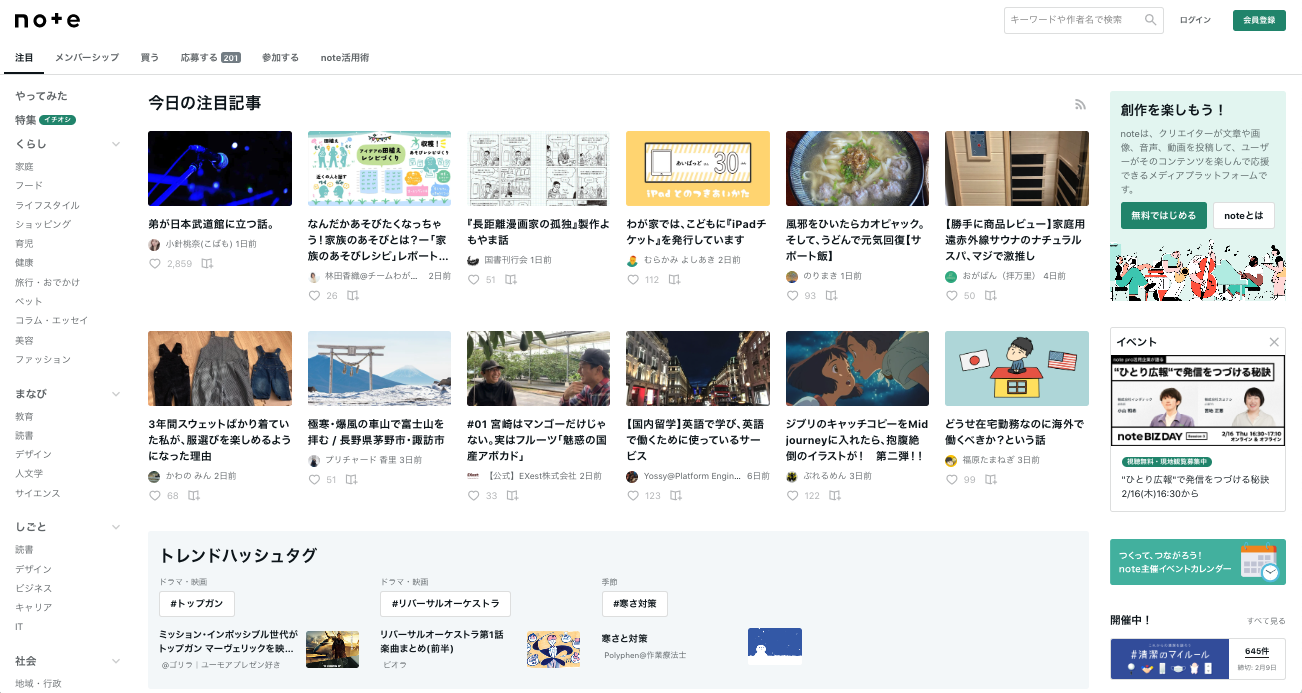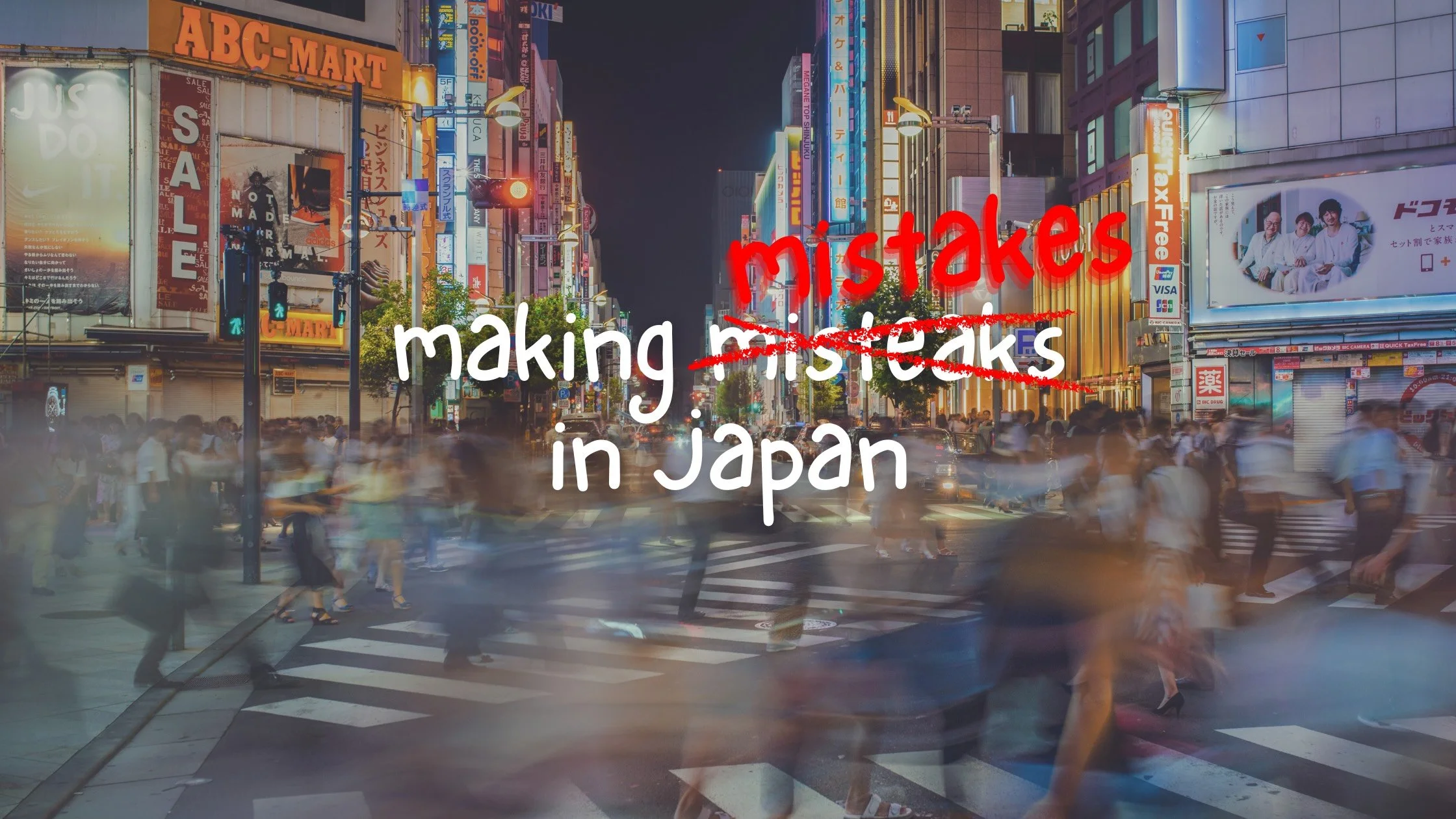How Companies Can take advantage of Note, the Japanese Blogging Platform
When marketing to Japan, as with any country, it's of course necessary to consider how to utilize social platforms such as Instagram, Twitter, and YouTube. With Japan in particular, the distribution of written content through blogs and owned media is also one of the most important points to consider in order to communicate your message.
As we mentioned in our blog “Why Translating English Content to Japanese Isn't Enough”, this is because text content tends to be preferred a lot more in Japan compared to other countries.
There are several ways for companies to operate their owned media, but today, we're going to dive into note, a unique Japanese platform that has been increasingly used by companies in recent years.
We hope you will find this article useful in understanding the platform and considering owned media measures as a way to communicate with target customers in Japan.
About note
note is a service that launched in Japan in 2014. It's a media platform where contributors, called "creators", post text, images, audio, and video, and users can enjoy and support their content. With free member registration, any individual or corporation, professional or amateur, can post on note as a "creator".
If you just want to browse as a user, no membership registration is required, and you can freely browse pages just like a regular blog service.
Note at a glance:
40.66 million+ MAU in August 2022 (note calculates MAU by active browsers visiting in a month)
For reference: Instagram’s MAU in Japan is 33 million
note has 5.5 million members as of December 2022
Content is viewable to members and non-members alike, but only members can post
The largest user group is business people in their 20s to 40s
One of the reasons note has become popular in Japan in recent years is that it has created a space that "values a safe atmosphere that's diverse so that anyone can enjoy and continue creating."
The most distinctive feature of the site is its UI and interactivity, which allows users to react with a "❤️" or "Like", and "Support" (the ability to donate) to articles they find interesting.
Like and Support buttons on a note article
Notification on note
Creators also receive notifications such as "Your article is getting attention" for ones that have been viewed a lot.
The UI and interactivity of the platform are well thought out.
In Japan, there has been a lot of negative news related to digital communication in recent years, especially with regard to Twitter and other social networks. They've been linked to suicides due to bashing and receiving slanderous remarks.
note has been able to navigate away from the negativity being associated with social platforms in Japan.
While many blog platforms have a "PV ranking" (page view ranking) section, note does not one.
This is due to their belief that a high number of page views does not necessarily mean that the content is valuable.
Articles are selected based on note's own criteria, such as the number of times they have been shared on social media and whether or not they're recommended by note's editorial staff.
In addition, there are no ads on note.
This makes it easier for users to browse pages compared to other blogging services, and also makes it difficult for contributors to try to monetize their content by getting page views through clickbait tactics instead of producing quality content.
Main page on note
About note pro
While regular note accounts can be used by companies and brands, there is also a corporate-specific plan called note pro.
The monthly fee starts at 50,000 yen and includes support services from note that helps create a strategy and easy-to-continue operation system. There's also custom functions such as scheduled posting, comment hiding, and original blog design.
According to note, when comparing corporate use of regular note with note pro, note pro companies receive 5x more page views than companies that are regular users.
Some note pro customizations
Favicon customization for browsers
Original domain
Logo customization (vs. note logo)
Official mark
Ability to hide follows/followers
Brand color setting
Corporate use case studies
KIRIN (major beverage manufacturer in Japan)
KIRIN’s corporate blog on note
KIRIN, a major beverage manufacturer of drinks like beer and tea, has been using note since 2018, in the early stage of corporate usage there.
KIRIN not only publishes content such as the secret stories behind the development of its products, but also holds user-participation contests that have attracted a lot of attention.
KIRIN’s “#Cheers to that Summer” contest on note, in collaboration with note
The contests invite users to submit essays, fictional pieces, and other content related to the company's beers and teas, as well as other products.
For example, the "#Cheers to that Summer" contest, held in collaboration with note, asked for summer memories related to KIRIN's flagship beer product, and received more than 4,000 entries.
The theme was set against the cultural background that beer is one of the symbols of summer in Japan, a theme that many Japanese people can relate to.
foufou (DTC apparel brand in Japan)
Japanese DTC (direct-to-consumer) apparel brand foufou has a brand mission of "healthy consumption", and they passionately write about it in their note, covering their brand philosophy, including their stance of no mass production and no promotional sales.
foufou’s blog on note
Pinned to the top of foufou's note is "For first-time foufou buyers", an article that summarizes the brand's philosophy, how to purchase and handle clothes, since it's not a typical apparel brand and doesn't produce large quantities.
In addition, information about new items and stories behind the designs are updated.
These types of content are a bit deep for those who aren’t interested in the brand, but they play an important role in keeping a relationship with passionate fans.
SmartHR (cloud-based HR service in Japan)
SmartHR is a Japanese company that provides a cloud-based human resources management system. They use note in order to shine light on the people who work at the company.
The company publishes blogs by members of each department within SmartHR, and disseminates information on how they think about their work and their company culture.
SmartHR’s sales team blog on note
SmartHR’s design team blog on note
This type of content plays a role in boosting the recruitment of talent and creating buzz with customers. The TAM Group has done this on note as well to help build our employer brand.
Of course, companies are not limited to note in order to disseminate their content, we just wanted to focus on what this unique Japanese platform note is and how it is used by companies.
Are considering sending out information and promotion to Japan, but aren't sure if you should use note or not? Are you wondering if it's really effective to do owned media in the first place, and how you should think about its relationship with social media and other marketing measures?
If you would like to know more, please feel free to contact us.
















